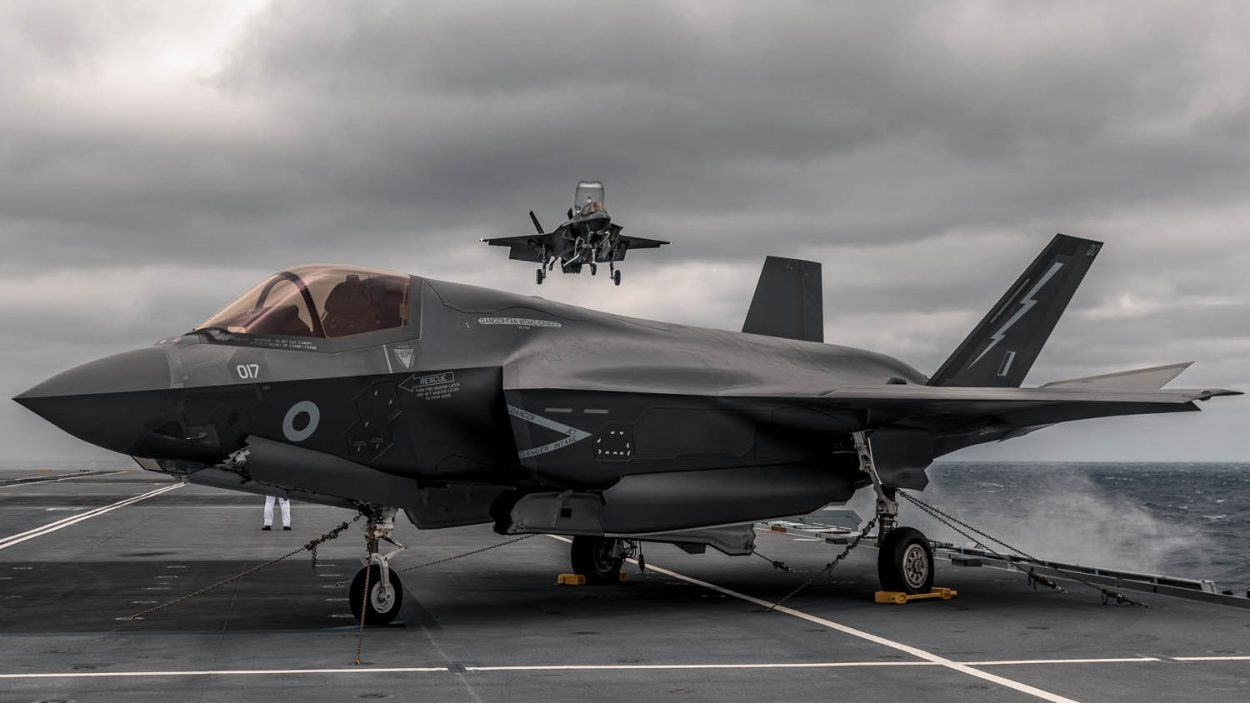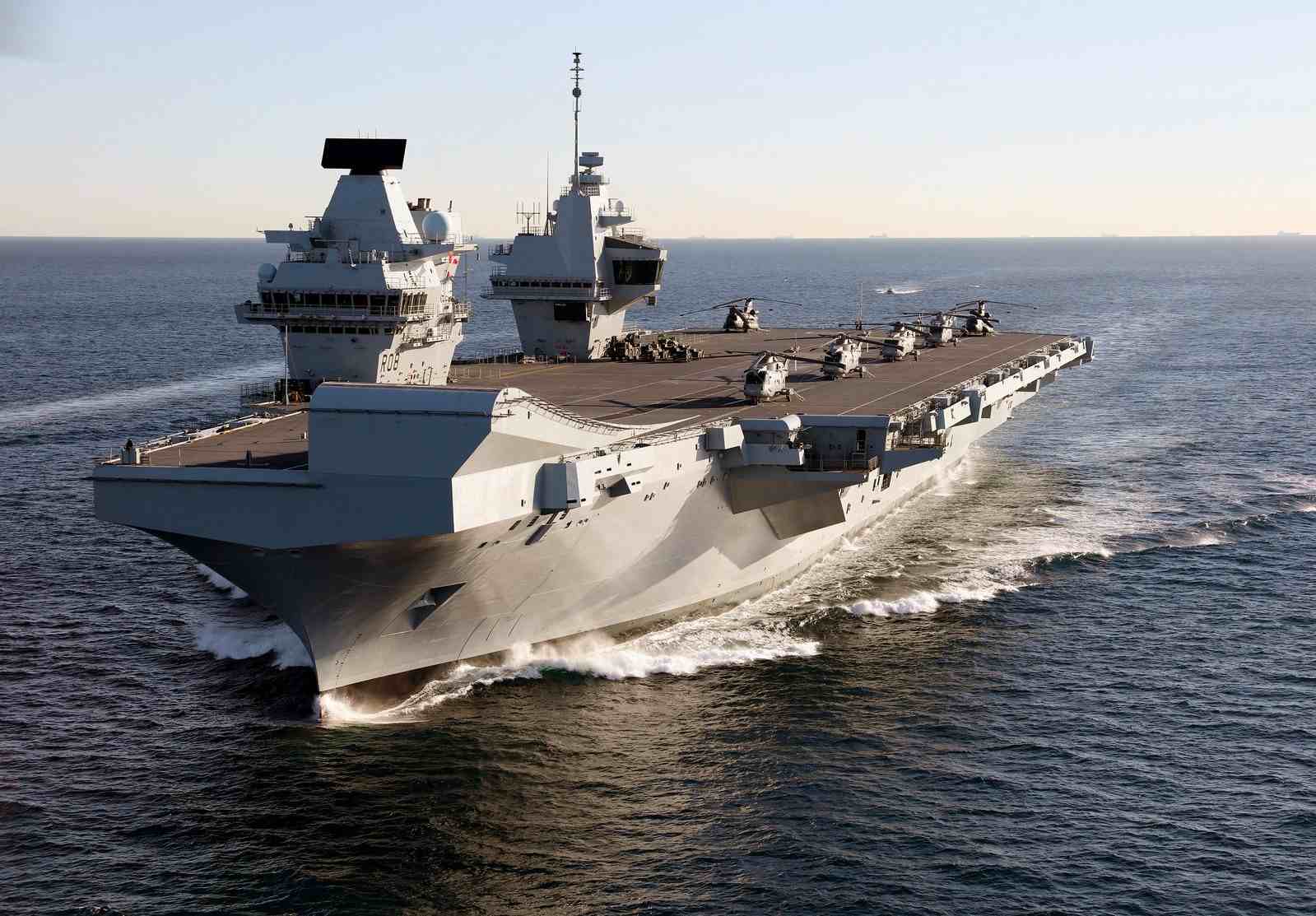The Pentagon recently announced that the US Central Command (CENTCOM), along with the UK military forces, carried out a new precision airstrike on Houthi militias in Yemen.
“The militaries of the United States and the United Kingdom, at the direction of their respective governments with support from Australia, Bahrain, Canada, and the Netherlands, conducted an additional round of proportionate and necessary strikes against eight Houthi targets in Yemen in response to the Houthis’ continued attacks against international and commercial shipping as well as naval vessels transiting the Red Sea,” read a joint statement.
Announcing the airstrikes, the UK Ministry of Defense (MoD) said four Eurofighter Typhoon FGR4 fighters carried out the operation. “Our aircraft used Paveway IV precision-guided bombs to strike multiple targets at two military sites in the vicinity of Sanaa airfield,” the MoD said in a statement.
The absence of British aircraft carriers (and F-35s deployed on them) has raised eyebrows among the UK’s former politicians and military watchers. On January 23, the UK’s refusal to send one of its £3.5 billion aircraft carriers to the Red Sea was met with dismay from former ministers of defense and chiefs of the Royal Navy.
In no ambiguous terms, they lamented that it was ridiculous that Britain still relied on RAF jets to carry out airstrikes against the Houthi in Yemen, which were flying 3,000 miles from their base in Cyprus.
In contrast, the United States has had its aircraft carriers stationed in the region since the hostilities in Gaza began in October. The US used its F/A-18E/Fs Super Hornet, which took off from its USS Dwight D. Eisenhower, to conduct the airstrike against Houthis on January 20.
The US forces have provided substantially more weaponry and performed eight separate airstrikes against Houthi targets in the last ten days owing to its aircraft carrier’s presence, making operations more convenient and rapid.
Footage released by USCENTCOM showing US Navy F/A-18E/F Super Hornets, EA-18G Growlers, and an E-2C Hawkeye launching from the USS Eisenhower to conduct strikes on Houthi targets in Yemen this evening. pic.twitter.com/mADzo2sGc8
— OSINTtechnical (@Osinttechnical) January 22, 2024
However, the opulent British aircraft carriers, purportedly constructed to allow Britain to control the seas, have stayed docked in Portsmouth. The HMS Queen Elizabeth and HMS Prince of Wales are called “investments” in British security and prosperity on the Navy’s webpage. Despite the hyperbole, neither carrier has gone near a combat zone since they entered service.
The massive Royal Navy vessels were spotted resting in calm waters near the Solent, only hours after the UK launched its most recent airstrikes to stop Houthis attacks on foreign tankers and cargo ships.
Why did the UK restrain its carriers and carry out airstrikes by flying its fighters from thousands of kilometers away?
EurAsian Times contacted naval experts to understand what may be keeping the UK MoD from following in the steps of its ally, the United States, and dispatching at least one of its two carriers to the Red Sea.
Why Are British Carriers Missing From Action?
Currently, two carriers are in service with the Royal Navy: HMS Queen Elizabeth and HMS Prince of Wales. According to the Royal Navy website, “Queen Elizabeth-class aircraft carriers are the biggest warships ever built for the Royal Navy – and the most advanced. They’re our nation’s flagships and will be for the next 50 years as they embark on our most vital global deployments.”
When asked why the British carriers were not sent to the Red Sea, Vice Admiral Shekhar Sinha (retd) told EurAsian Times, “The Red Sea is restricted and not an open sea. In restricted space, deploying an Aircraft Carrier is not a sound tactical consideration. The aircraft has long legs and can strike from some distance. Also, in the turmoil world over, it is better to keep aircraft carriers in a location where they can use the advantage of flexibility and redeploy to new theatres. The UK has options of deployment from bases of NATO allies, and therefore, the issue of reluctance doesn’t apply.”
However, there may be more than what meets the eye. According to the report published in The Mail, the reason behind the UK’s reluctance is that high-ranking government officials blocked a recommendation by the Royal Navy to send a carrier.
Senior officers are reportedly appalled by the decision and fear that one of the carriers may be exposed to future defense budget cuts.
Speaking to the Mail, Admiral Lord West said: “I find it extraordinary we have not sent a carrier. As with either HMS Queen Elizabeth or HMS Prince of Wales, we could make a much more significant contribution. Instead, we are reduced to flying thousands of miles to and from Cyprus and to dropping a strictly limited number of warheads at great expense.”

“Why did we bother building the carriers when, seemingly, we are reluctant to deploy them operationally? Doing so would send a powerful message to the Iranians and the Houthis. We must plan for the medium to longer term as there is no end.”
Commander Ashok Bijalwan, another retired navy man from the submarine arm, explained to EurAsian Times – “1. Deployment of a Carrier Battle Group is no less expensive with escort ships (frigates, destroyers, and a fleet auxiliary) and a nuclear attack submarine. 2. The RN has only two aircraft carriers. From what I have read, they have a problem with spares. Prince of Wales suffered an unusual breakdown of a starboard propeller shaft in 2022. RN may not want a similar incident to put the operation in jeopardy. 3. They don’t have enough F35Bs to deploy a CBG. To my knowledge, they only have one squadron.”
Commander Bijalwan noted that the Prince of Wales has not completed its flight operations trials yet. The Royal Navy’s sole auxiliary fleet, Fort Victoria, has been nonoperational since the end of 2021 and is unlikely to be available for another year.
Moreover, a previous report published in the British publication ‘The Telegraph’ stated the recruiting crisis plaguing the Armed Forces has rendered Britain’s aircraft carriers unfit for deployment in the Red Sea.

There have been requests to deploy HMS Queen Elizabeth, the £3 billion aircraft carrier owned by the United Kingdom, to the area as a member of the Carrier Strike Group (CSG), a ring of cutting-edge warships, submarines, helicopters, and fifth generation fighter fighters.
The Telegraph noted in its report that there is a shortage of sailors on RFA Fort Victoria, the sole solid support ship supplying the CSG with all the ammunition, planes, spare parts, and food needed for an entire deployment.
Defense officials stated that although RFA Fort Victoria is a “crucial” part of the Carrier Strike Group, the aircraft carrier is not “reliant” on the vessel and can be deployed without it. However, a navy source reportedly cautioned that it would be “sub-optimal” to send the group without RFA Fort Victoria.
It typically employs 100 people, but right now, it’s thought to be operating with a skeleton crew. The warship, believed to be in good mechanical condition, is still in Liverpool’s Cammell Laird shipyard. It was supposed to return to service last year after undergoing major repairs.
Lord West, the former First Sea Lord, told The Telegraph, “It’s extraordinary that when things started hotting up in the Red Sea region, there wasn’t the immediate move to send an aircraft carrier there,” Lord West said. “If we had an aircraft carrier there, we could have had 24 aircraft only 100 miles from Yemen ready to go at any moment and reattack.”
Almost two weeks of bombings on the Houthis in Yemen failed to stop the group’s attacks on marine trade, so the Biden administration is now preparing for a long-term military campaign against them. If the RAF fighters had joined the effort, they would still have flown from 3,000 kilometers away.
- Contact the author at sakshi.tiwari9555(at)gmail.com
- Follow EurAsian Times on Google News
The post Eurofighter Typhoons ‘Push Back’ F-35s To Strike Houthis; Experts Aghast Over UK’ Aircraft Carriers Absence appeared first on Latest Asian, Middle-East, EurAsian, Indian News.